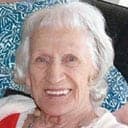In 1975, a second competitive channel was established on New Zealand television. The channel, TV2, first went to air on 30 June 1975. This brief clip on the Auckland Deaf Centre aired on TV2 just over a week later, on 9 July 1975 under Speakeasy, a daily talk show.
The footage shows Deaf people playing pool, badminton, reading, having coffee and talking in sign language. The Eddowes Pensioner Village was also featured. A signage in front of the centre shows the Auckland Deaf Centre as incorporating:
- Auckland Deaf Society Inc
- Welfare Services for Born Deaf
- Lady Porritt Youth Hostel
- Eddowes Pensioner Village
The Eddowes Pensioner Village
The building of the Eddowes Memorial Village began in 1970, led by the Friends of the Deaf, with the building of five units – three single and two double units – on the tennis courts which were not in use. The quote of $27,455.66 from a builder, A.J. Hart Ltd was accepted by the Friends of the Deaf.
The completion of the pensioners’ flats in 1970 was considered a milestone in the history of New Zealand’s Deaf community, as it was the first village for the elderly Deaf to be erected in New Zealand.
When considering a suitable name for the pensioner flats, the name ‘Miss Helen Keller’ was tabled. However, permission to use that name was declined when sought from America. It was then that the Friends of the Deaf decided on the name ‘Eddowes’ for the project in memory of two sisters who had made generous donations in past years. At a later date, that name became ‘Eddowes Memorial Village for Elderly Deaf’.
Hostel for young Deaf people
The new quarters at the rear of the building at 162 Balmoral Road were completed in 1972 and were occupied by the appointment of Mrs Cracknell as Matron. Her salary was paid by the occupants at the rate of about $30 per week.
After many months, the three houses in Rocklands Ave had alterations made to them and all rooms were fully furnished and equipped. The first two hostels were occupied by seven boys and the other one by five girls (all deaf) and the rate of board was approximately $15 per week.
Reference:
The Story of the AUCKLAND DEAF SOCIETY INC. First Half Century of the ADS 1937-1987, compiled by John M.Hunt (1989).


















